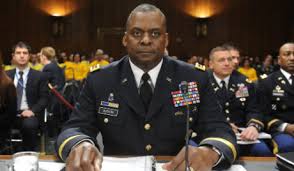http://video.tampabay.com/?ndn.trackingGroup=90964&ndn.siteSection=tbtimes&ndn.videoId=29712983&freewheel=90964&sitesection=tbtimes&vid=29712983
Instead of fighting the Islamic State, also known as ISIS, in small units, the U.S.-trained rebels would be attached to larger existing Kurdish and Arab forces. They would be equipped with U.S. communications gear and trained to provide intelligence and to designate ISIS targets for airstrikes in coordination with U.S. troops outside of Syria, the officials told the Associated Press.
The change amounts to an acknowledgement that the administration’s current approach is not working. It was described by officials who spoke on condition of anonymity because a final decision on how to proceed has not been made.
The discussion of a new approach comes a day after the head of U.S. Central Command, Gen. Lloyd Austin, told Congress that the $500 million effort to train 5,000 moderate Syrian rebels in a year had yielded “four or five” new fighters after another 50 or so were captured, wounded or fled in their first encounter with extremist militants.
The new approach is designed to intensify military pressure on Raqqa, the self-declared capital of the so-called caliphate ISIS has established across much of Syria and Iraq. The city is sometimes targeted by American-led coalition airstrikes, and Syrian government forces have occasionally targeted it, as well.
In addition to changing the role of the U.S.-trained rebels, the Pentagon would scale back their numbers from the original target of 5,400 per year to a much smaller total, perhaps 500, the officials said. Their vetting, designed to weed out terrorist infiltrators, also would be streamlined, one official said Thursday.
http://video.tampabay.com/?ndn.trackingGroup=90964&ndn.siteSection=tbtimes&ndn.videoId=29712983&freewheel=90964&sitesection=tbtimes&vid=29712983



